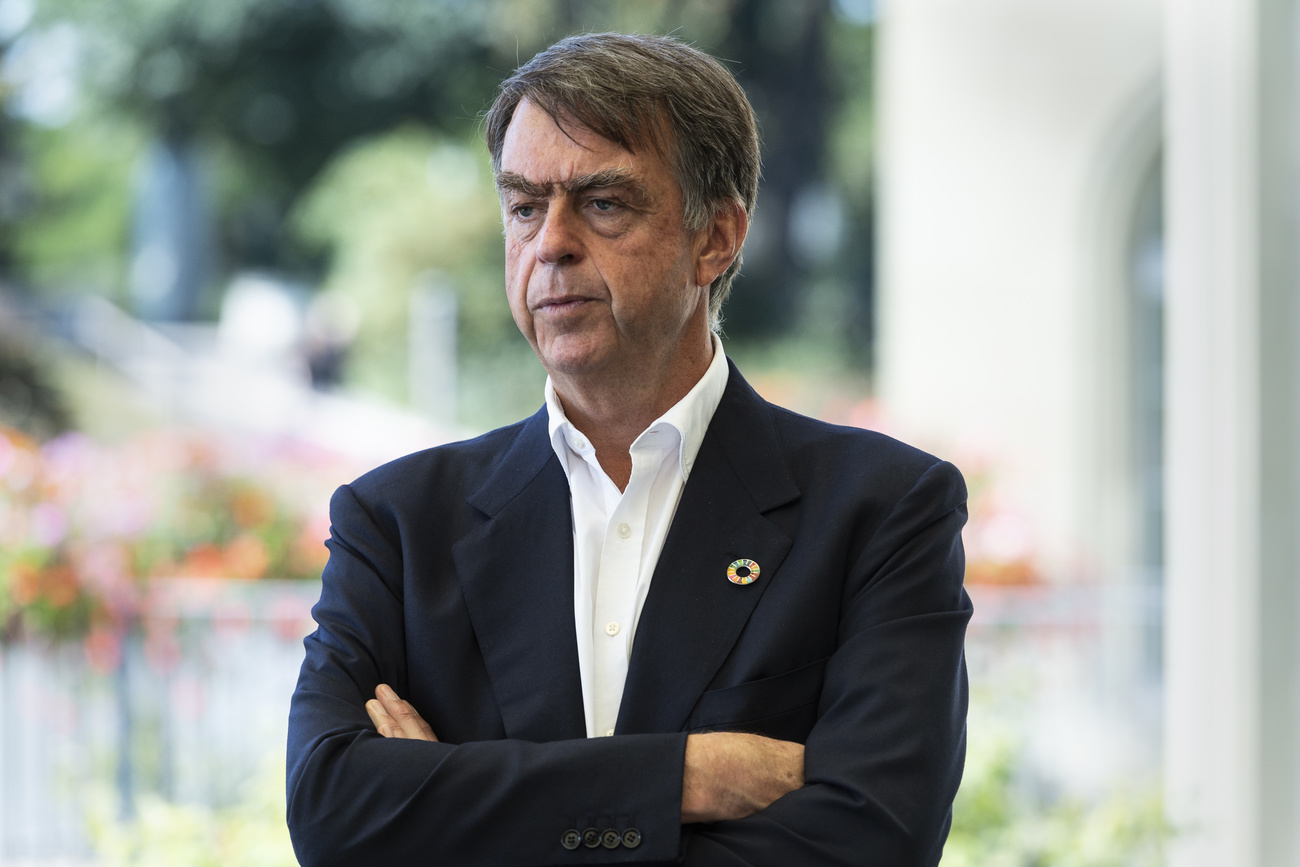Permafrost moves in mysterious ways

Permafrost - the glue which holds Switzerland’s highest mountains together - is starting to yield its secrets.
Researchers are shedding light on the complex processes which take place underground and the impact of climate change.
This week they are revealing their latest findings at an international conference in Zurich, attended by more than 300 permafrost experts.
The issue came to public attention last week, when the authorities were forced to close the Matterhorn to climbers following a rockfall.
It has since re-opened but concerns remain about the stability of the permafrost, which holds the mountain together.
The conference is not just focusing on frozen ground in the Alps: Arctic, marine and Martian permafrost are also on the agenda.
Between four and six per cent of Switzerland is covered by permafrost – compared with the three per cent covered by glaciers.
In a previously unpublished work, Felix Keller of the Engadine Academy has calculated that 33 per cent of Switzerland’s Alpine areas – regions above 2,500 metres – are covered by permanently frozen ground.
Where scientists have been able to measure temperatures in either frozen soil or frozen rock, they have noticed that the mercury is rising.
Meltdown
One of the most investigated permafrost research areas in the Alps is the St Moritz region in the Upper Engadine.
In 1987 scientists began to take temperature readings from a borehole in frozen ground above the celebrated ski resort.
About ten years later, their published findings made headline news around the world.
Temperatures in the icebound soil had risen by as much as a degree during that period. The statistic is still widely quoted today.
What is rarely mentioned is that within two years the temperature cooled down dramatically, falling close to 1987 levels. Since then there have been fluctuations each year.
“The warming tendency is actually about 0.2-0.3 degrees Centigrade over ten years,” Keller told swissinfo.
Deep freeze
Although not as dramatic as the original figure, the trend is still cause for concern.
Defrosting of the ground could lead to crumbling mountains and make ski-lift pylons unsafe.
“The problem is that as the ice melts or becomes warmer, it is less strong,” Sarah Springman, professor of geotechnical engineering at the Federal Institute of Technology in Zurich, told swissinfo.
“If the soil or rock is on a very steep slope, then essentially we can think of the ice as glueing that soil or that rock to the front of the face.
“When the ice becomes weaker, masses can often detach and even if it doesn’t completely melt, you’ll have rockfalls and you may even have debris flows from your frozen soil which we call rock glaciers.”
Snow cover
Scientists now realise that one of the key factors affecting temperatures in the ground is snow cover.
Perhaps surprisingly, less snow cover in the Alps – which is regularly cited as an example of global warming – is often good news for permafrost; more snow cover is bad news, depending on when it falls and how long it lies.
“If you have a lot of snow, more than 80-100 centimetres, especially if it comes early in winter, it insulates the ground and keeps it from cooling and the temperature record is then quite warm,” said Christof Kneisel from Würzburg University in Germany, who is studying the permafrost in the Upper Engadine.
“Conversely, if you have a thin snow cover, then the winter cold can easily penetrate into the ground and can cool the ground.”
However, if snow falls late in the season, then the winter cold has had time to penetrate and cool the ground. If the snow then lasts into the early summer, it keeps the ground from warming.
Researchers believe this phenomenon accounts for the striking drop in temperatures in the borehole above St Moritz after 1994.
It also probably explains why above Pontresina, where a SFr7 million dam has just been built to stop avalanches and debris flow, temperatures in the permafrost over the past seven years have actually dropped slightly.
Slippery slope
To complicate the picture further, it is not just snow cover which influences permafrost: the steepness of the slope, the type and quantity of surface material, seasonal and short term trends, and, above all, the ratios of ice, soil and rock, play a part.
“We often drill boreholes into rock glaciers,” said Springman. “The problem is that the composition of a rock glacier is so varied, that you might drill another borehole five metres away and find something quite different.”
All this makes long-term monitoring essential, agree the experts.
“We are only really beginning to understand these complicated processes,” said Martin Hoelzle of Zurich University. “The more we learn, the more we know we still have a lot to learn.”
swissinfo, Vincent Landon in the St Moritz region
Between four and six per cent of Switzerland is covered by permafrost.
In Alpine regions above 2,500 metres, 33 per cent of the area is covered in permanently frozen ground.
Scientists are keen to know the impact of climate change.
Extensive research on the phenomenon is taking place is the St Moritz region.
Some 288 of Switzerland’s 1,894 cable car installations are anchored in permafrost.
The eighth international conference on permafrost is taking place in Zurich from July 21-25.

In compliance with the JTI standards
More: SWI swissinfo.ch certified by the Journalism Trust Initiative











You can find an overview of ongoing debates with our journalists here . Please join us!
If you want to start a conversation about a topic raised in this article or want to report factual errors, email us at english@swissinfo.ch.